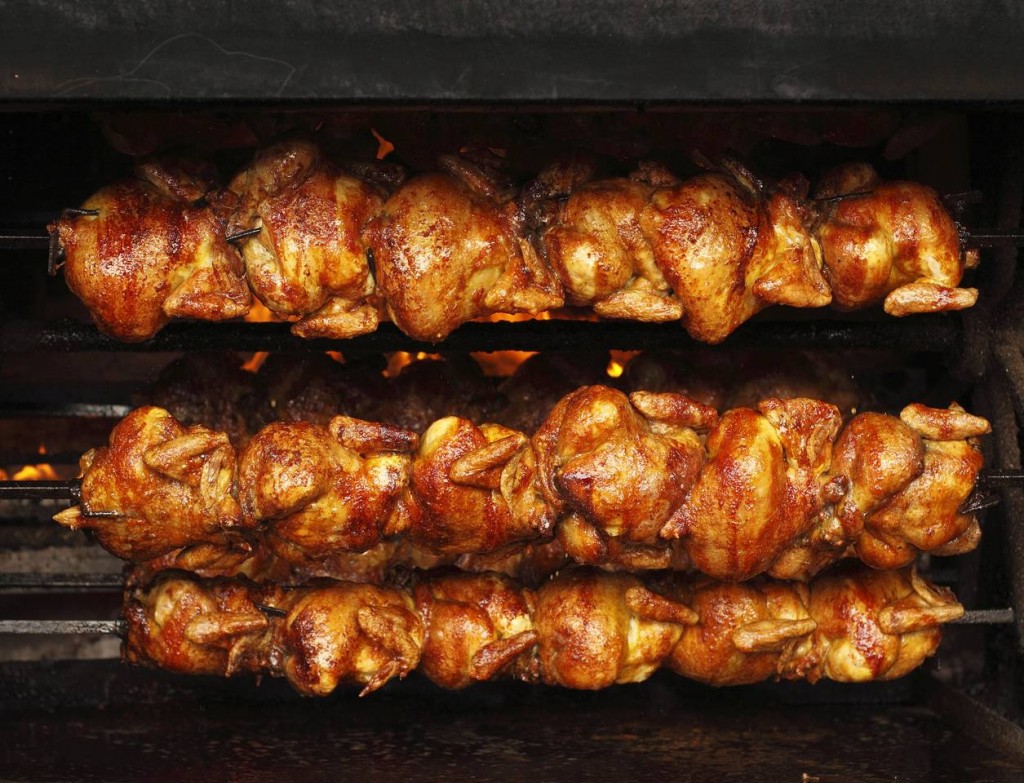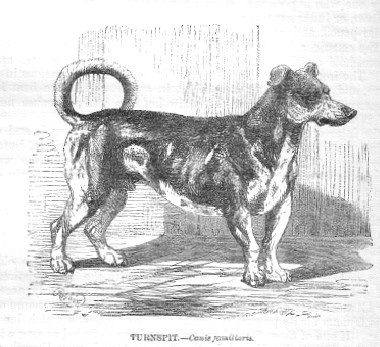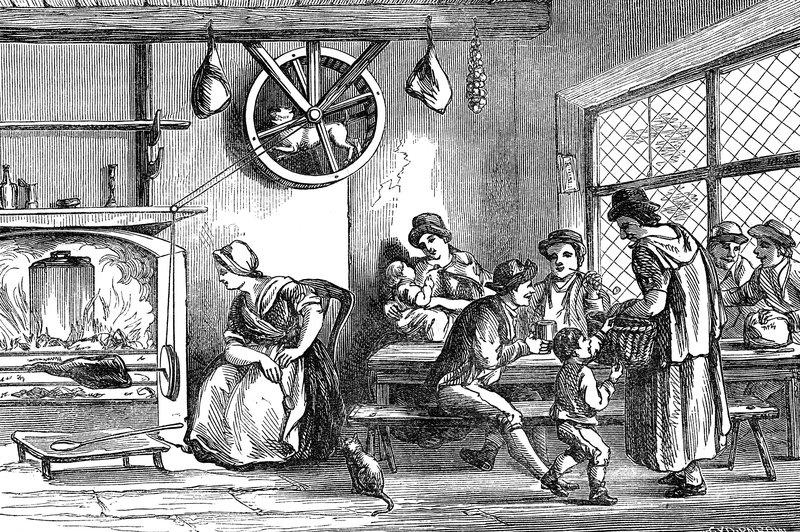The Kitchen Utensil that Woofed

Pictured above are a slew of rotisserie chicken being cooked. The “chicken” part is the bird, the “rotisserie” part is the method of cooking. The chicken are put onto a stick called a “spit” which is then slowly rotated over a heat source. The idea is to keep the meat moist as it cooks; because the bird is constantly rotating it, effectively, self-bastes. The word “rotisserie” dates back to 1450 — it’s of French origin — but the method of roasting meat by rotating it over a fire is something humans have employed for more than two thousand years.
Today, we have motors powered by electricity — that’s what turns our meat. But what about the rotisseries of, say, the 1500s? Who turned the spit?
These guys:

Yes, that’s a drawing of a dog. Specifically, it’s a “turnspit dog,” a breed of dog which may be similar to the Welsh Corgi. We’re not sure, exactly, because there are no turnspit dogs alive today. But for a while, they were all the rage. Not as pets, though — as kitchen helpers.
Cooking chicken or any other meat on a spit is a slow, tedious process which requires a regular, smooth rotation. People can turn the spit by hand and, in early days of rotisserie cooking, that’s exactly what happened. But that wasn’t going to happen forever because let’s face it, whoever had to turn the spit had a terrible, terrible job. Enter something akin to a large hamster wheel — and a dog to power it. Just look at the image below, and you’ll see the dog in a wheel, top-center.

And just about everyone had one. Turnspit dogs, as NPR recounts, were “an essential part of every large kitchen in Britain in the 16th century” and were specially bred to operate these spit-powering wheels. When you wanted to cook dinner, you’d put your meat on the spit and connect it to the relevant gear. Then you’d get your dog, put him in the wheel, and some time later to check on it to see how the meat was cooking — and how the dog was moving. Turning the wheel was hard work, and many houses and places of business had a second dog, one who could take over when the first one tired out.
If this seems inhumane, that’s probably because it is. By today’s standards, you’d never see a household use domesticated animals as a source of power — dogs are supposed to be pets, not some sort of niche Ron Popeil informercial product. But the people of the day didn’t see it that way. Rather, the author of Amazing Dogs, a Cabinet of Canine Curiosities, Jan Bondeson, told NPR, “turnspit dogs were viewed as kitchen utensils, as pieces of machinery rather than as dogs.”
Ultimately, new innovations — steam power, most notably — caused the need for the turnspit dog to wane. As demand for the dogs went away, so did the need to breed more of them. That’s why the picture of the turnspit dog, above, is an illustration; the breed is now extinct.
Bonus fact: American grocery stores sell rotisserie chickens — cooked on premises that day, often — and in many cases, the rotisserie chicken is cheaper than a similarly-sized uncooked one. What gives? Is there something wrong with the cooked bird? Typically no — although there was about to be. As Bloomberg reports, “grocery stores make them out of unsold chicken that is about to pass its expiration date.” As the chickens were likely going to be discarded otherwise, any money the store can recoup is a win for the grocer.
From the Archives: This is only barely related but it’s a good story — Cook’em Horns: What happened to the first Texas Longhorn’s mascot.
Related: “Amazing Dogs, a Cabinet of Canine Curiosities” by Jan Bondeson.
